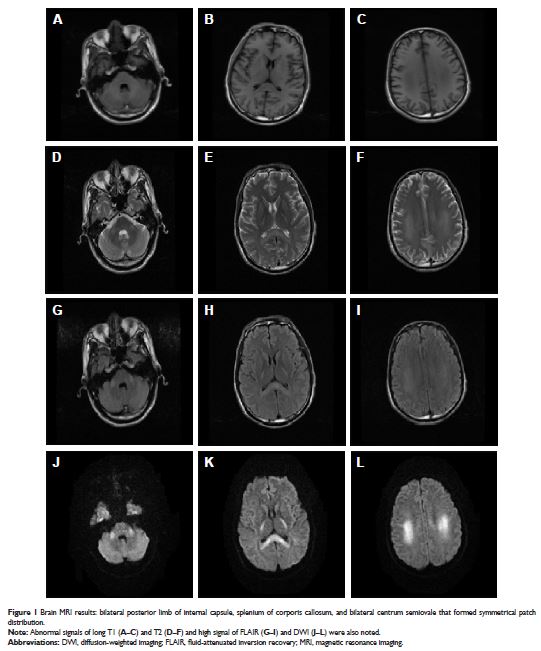9 7 8 1 6
论文已发表
注册即可获取德孚的最新动态
IF 收录期刊
- 3.3 Breast Cancer (Dove Med Press)
- 3.4 Clin Epidemiol
- 2.5 Cancer Manag Res
- 2.9 Infect Drug Resist
- 3.5 Clin Interv Aging
- 4.7 Drug Des Dev Ther
- 2.7 Int J Chronic Obstr
- 6.6 Int J Nanomed
- 2.5 Int J Women's Health
- 2.5 Neuropsych Dis Treat
- 2.7 OncoTargets Ther
- 2.0 Patient Prefer Adher
- 2.3 Ther Clin Risk Manag
- 2.5 J Pain Res
- 2.8 Diabet Metab Synd Ob
- 2.8 Psychol Res Behav Ma
- 3.0 Nat Sci Sleep
- 1.8 Pharmgenomics Pers Med
- 2.7 Risk Manag Healthc Policy
- 4.2 J Inflamm Res
- 2.1 Int J Gen Med
- 4.2 J Hepatocell Carcinoma
- 3.7 J Asthma Allergy
- 1.9 Clin Cosmet Investig Dermatol
- 2.7 J Multidiscip Healthc

溴敌隆 (Bromadiolone) 中毒对中枢神经系统的影响
Authors Wang M, Yang Y, Hou Y, Ma W, Jia R, Chen J
Received 23 May 2017
Accepted for publication 13 July 2017
Published 30 August 2017 Volume 2017:13 Pages 2297—2300
DOI https://doi.org/10.2147/NDT.S142375
Checked for plagiarism Yes
Review by Single-blind
Peer reviewers approved by Prof. Dr. Roumen Kirov
Peer reviewer comments 2
Editor who approved publication: Professor Wai Kwong Tang
Abstract: Cases of rodenticide poisoning (second-generation long-acting dicoumarin
rodenticide, superwarfarin) have occasionally been reported. The main symptoms
of bromadiolone poisoning are skin mucosa hemorrhage, digestive tract
hemorrhage, and hematuresis. However, the symptoms of central nervous system
toxicity have rarely been reported. Our case reports on a 41-year-old male who
had no contact with bromadiolone. His main symptoms were dizziness, unsteady
gait, and abnormal behavior. Laboratory test results revealed the presence of
bromadiolone in his blood and urine, a longer prothrombin time, activated
partial thromboplastin time, and a high international normalized ratio.
Magnetic resonance imaging of the brain showed that the bilateral posterior
limb of the internal capsule, splenium of corporis callosum, and bilateral
centrum semiovale formed symmetrical patch distribution. The patient gradually
recovered after treated with vitamin K1 and plasma transfusion. Our clinical
study could pave the way to improve the detection of bromadiolone poisoning and
avoid misdiagnosis.
Keywords: bromadiolone, poisoning,
central nervous system, superwarfarin
